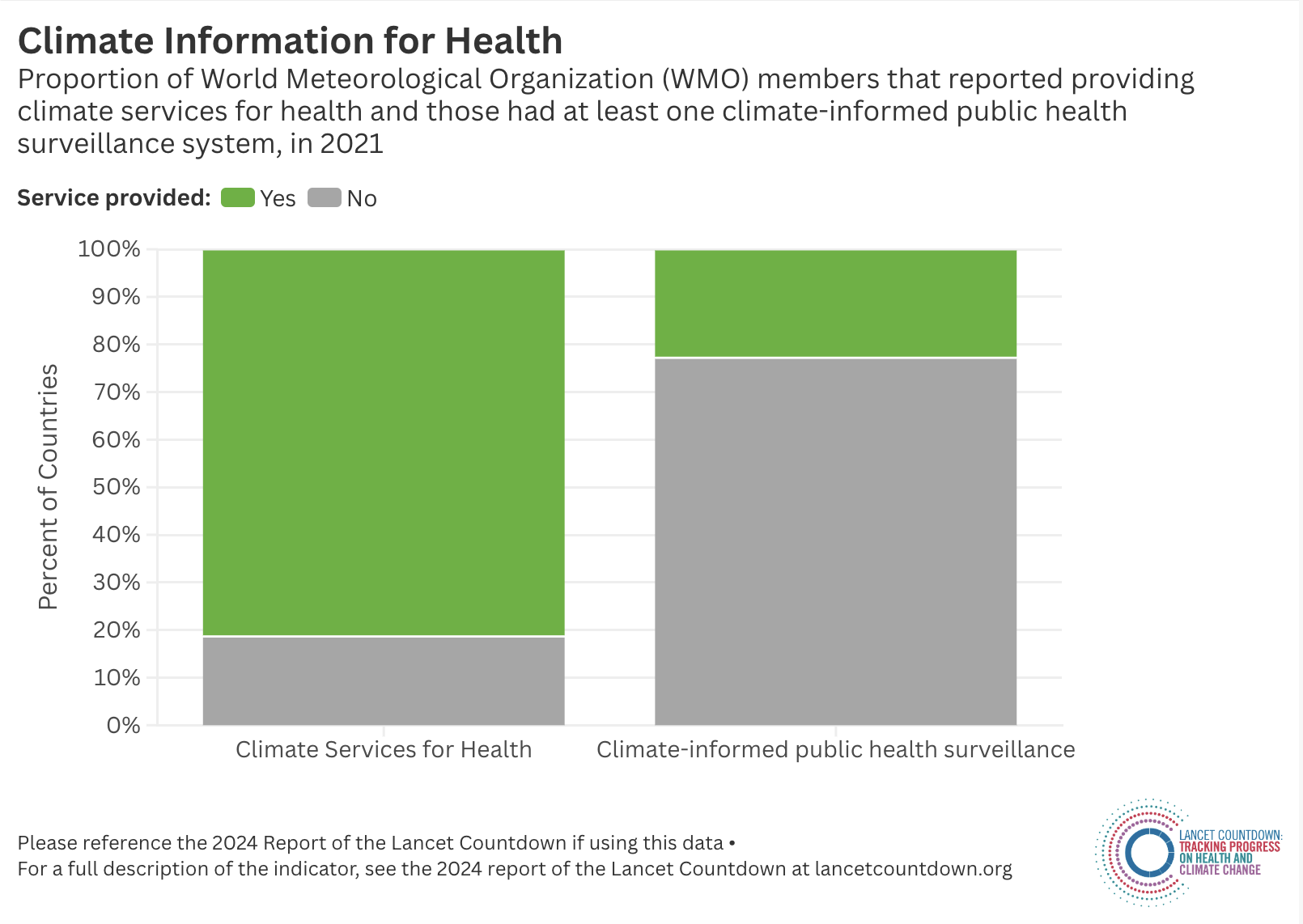Featured Resource
Climate Services for Health: Fundamentals and case studies for improving public health decision-making in a new climate
2018
Explore health-relevant side events, news and resources from the 2025 UN Climate Conference.
Health at COP30 >Climate & Health Explained
Chapter 3: Climate Services for Health
Climate services can help health professionals and decision makers better understand the influence of climate and weather conditions on health; to anticipate when, where and who may be at greatest risk.
This knowledge enables them to detect, monitor, predict, minimize, and manage climate related health risks, resulting in more lives saved, more cases treated, reduced disease burdens, and cost savings made in service delivery, as well as increased resilience of health systems to climate shocks and stressors.
Tailoring climate information for use in the health sector requires strong partnerships and collaboration between the producers and users of climate information.

Although 81% of WMO Member countries provide climate services for health, only 23% of Ministries of Health reported having at least one climate-informed public health surveillance system.
Implementation of health early warning systems ranges from 35% for vector-borne diseases and 33% for heat-related illness, to just 10% for mental and psychosocial health, 14% for non-communicable diseases, and 14% for malnutrition and foodborne diseases. Only 5% of countries reported a health early warning system for impacts on health-care facilities.
Source: 2024 Report of the Lancet Countdown